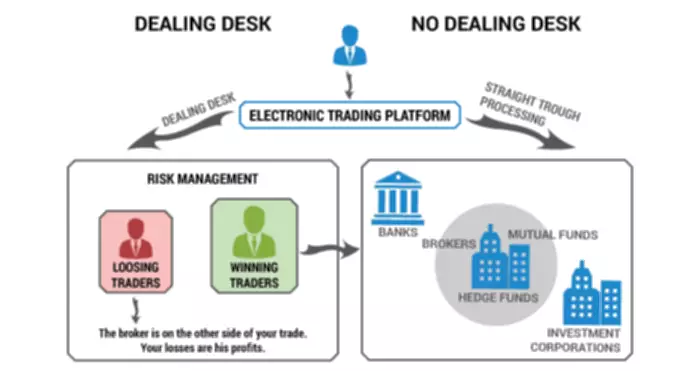Most investors use both technical and fundamental analysis to make decisions. Both traders and investors need to analyze market sentiment. Traders may use sentiment indicators to gauge short-term market movements, while investors consider overall market sentiment when making long-term investment decisions. Ultimately, whether one chooses to be a trader or an investor trading or investing which better depends on individual preferences, risk tolerance, and financial goals. Some individuals may enjoy the fast-paced nature of trading and the potential for immediate rewards, while others may prefer the more steady and long-term approach of investing. Both strategies can be profitable but require different skill sets, mindset, and strategies for success.
Money in a trading account should not be allocated for college tuition or the mortgage. Traders must never allow themselves to think they are simply borrowing money from these other important obligations. Psychology plays a crucial role in both trading and investing, as emotions can influence decision-making and impact financial outcomes. Moreover, algorithmic trading has drastically improved market liquidity and efficiency. By automating trading processes, algorithms can facilitate a high volume of transactions within milliseconds. This not only provides liquidity to the market but also reduces the bid-ask spread, making the market more efficient for all participants.

Wide price swings and market uncertainty can lead to heightened anxiety among participants and even systemic risks. As a result, market regulators and central banks often monitor and take action to moderate excessive volatility to ensure the stability and integrity of financial markets. Trading can be inherently riskier due to the short-term nature of transactions, requiring traders to manage their positions actively. Investors, with their long-term perspective, may experience less frequent price fluctuations and can endure market downturns more comfortably.

Investors must be adept at fundamental analysis, financial planning, and portfolio diversification. Before diving into compound trading, traders must arm themselves with knowledge and understanding of both the rewards and the risks. A well-thought-out trading plan, discipline, and a robust risk management strategy are crucial components for anyone considering this approach. The goal of investing is to gradually build wealth over an extended period of time.
This influences which products we write about and where and how the product appears on a page. Here is a list of our partners and here’s how we make money.
Many people use the words “trading” and “investing” interchangeably when, in reality, they are two very different activities. While both traders and investors participate in the same marketplace, they perform two very different tasks https://www.xcritical.in/ using very different strategies. Both of these roles are necessary, however, for the market to function smoothly. This article will take a look at both parties and the strategies they use to make a profit in the marketplace.
Some of these strategies include scalping, day trading, swing trading, event trading, and position trading. It should be noted that no trading strategy is foolproof; there are advantages and disadvantages to any trading strategy. Traders also consider risks when employing their strategies. Traders need to possess several quantitative and qualitative skills to be successful. The skills are a combination of technical, analytical, and behavioral qualities. It is a prerequisite for traders to be experts of the financial markets.

If you hold onto the bond until its maturity, you’ll get back your initial investment of $1,000. However, suppose you decide to sell the bond before its maturity in the secondary market. In that case, its price might be higher or lower than its face value, depending on factors like interest rate changes, the company’s creditworthiness, and overall market conditions. It is important to note that protecting your trading capital is not synonymous with never experiencing a losing trade.
If you are new to share market investments, start on the right foot. If you invest in share market, your aim may be to generate gains from a long-term investment. A trader prefers a short-term investment and aims to sell the shares in order to profit from price fluctuations. HowToTrade.com takes no responsibility for loss incurred as a result of the content provided inside our Trading Room.
Saving enough money to fund a trading account takes time and effort. Yes, some individuals adopt a hybrid approach, engaging in both trading and long-term investing to diversify their income streams. Ultimately, the decision to use a robo-advisor should be based on an individual’s unique needs and preferences. It may be beneficial to explore a variety of options and consider consulting with a financial professional to determine the best approach for achieving one’s investment goals.
Moreover, compound trading is a promising theory, but applying it is far from reality. Most important is to develop a trading strategy that enables you to generate a fixed return over a compounding period. Then, the compound trading method can assist in effectively managing your portfolio.
Market volatility, unforeseen economic events, or even a series of unfavorable trades can quickly erode gains. Thus, while the strategy holds promise, it’s not a guaranteed path to riches. Although these terms are generally used interchangeably, trading and investing are not the same thing.
- Technical analysis seeks to predict price movements by examining historical data, mainly price and volume.
- We have no knowledge of the level of money you are trading with or the level of risk you are taking with each trade.
- However, for investors who take a long-term approach, the tax implications can be different.
- Successful short-selling requires careful analysis, market research, and risk management.
- Traditional human advisors typically charge higher fees for their services, often based on a percentage of assets under management.
Examples of market-timing information include economic and financial releases, as well as market sentiment indicators. When using technical and market-timing information, traders analyze past and current market data to spot patterns and trends. This is to anticipate future price movements in assets such as stocks, bonds, futures, currencies, or commodities. It helps traders and investors navigate the gap between intrinsic value and market price by leveraging techniques like statistical analysis and behavioral economics. Technical analysis helps guide traders to what is most likely to happen given past information.
